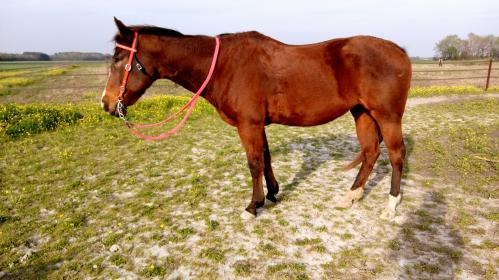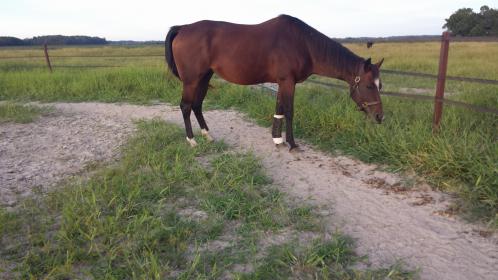Last summer my horse had a major pot belly. She was being worked hard at least 5 days a week and was on absolutely no grain, we were actually having to limit her pasture with a grazing muzzle. I’ve noticed she’s still got a little pot belly, but not as bad as summertime. We actually thought she was foundering because she was getting so fat. I know it’s not worms because we worm her and we actually just wormed a week or two ago, and it’s definitely not ulcers. She’s getting back into work after a 6 month layoff and is doing good. Any idea on why she’s got a bit of a potbelly and what can I do about it?
I’ve got one image from a short while after her layoff so she had lost a bit of muscle (and she’s got the wrap on her leg). A more recent picture was also included.
*And just to clarify, that’s not her pasture that’s just the arena. Her pasture is around 8 acres I believe.


